Ooh well! We are glad you finally made the bold decision of starting your kids with a balance bike instead of training wheels or tricycles. If you are still having doubts as to why we call the move BOLD, there are many reasons why balance bikes make kids master the art of cycling faster.
That is not our key agenda on this one, though; we are doing this detailed guide to learning to ride a balance bike. It is our only appreciation to parents out there who find it worth to get their kids on bikes. And the best way to show love is to train them on how to ride their balance bikes, then graduating them to first, second, third, and nth number of bikes as they grow.
We have laughed at questions like “just how long should one try with a balance bike before deciding to give up?” Well, it needs patience, but if your daughter or son is not just into cycling, there are a bunch of other ways to whet their appetite for cycling.
Trust us, the look on the face of your kid and the joy of mastering a balance bike is one to behold. Even though it takes time, patience, space, encouragement, and time is all it takes to master balancing the best balance bikes out there.
So, where do we even begin when teaching a kid to ride a balance bike?
Everything you need to Know about Balance Bikes
What is the Best Age for a balance bike?
Before we delve into the process of learning how to ride or teaching a child how to ride a balance bike, let us address this pertinent question. Mostly, kids can start riding balance bikes when they hit 18 months up to 5 years. In most cases, children between 2 and 5 years enjoy riding balance bikes and always learn how to ride them faster. Our observation, however, also indicates that by the age of 4 years, most children move to bikes with pedals.
Are Balance Bikes a Good Idea?
Balance bikes are designed for toddlers and kids. Their kid-specific design allows kids to have more control over their bikes and most definitely learn how to stop or slow down a bike.
Definitely! While balance bikes have a steeper learning curve compared to scooters, tricycles, and bikes with training wheels, they teach the child how to ride a bike better. From the balance bikes, kids learn important bike skills such as coordination, control, balance, and resilience. Thus, immediately they graduate to their first pedal bikes, the transition becomes smooth and easy.
The primary purpose of a balance bike is always to teach the kids how to balance bikes. It also inspires confidence in the kids to be brave when on two wheelies. When kids learn to ride a bike without training wheels, they hit an important milestone.
So with the 12 inch and 14-inch balance bike options in the market, both toddlers and big kids below 5 years can enjoy riding balance bikes.
Please read our article on why balance bikes are the best for toddlers.
How does a balance bike work?
As its name already suggests, a balance bike works well when balanced. So, typically, you would argue that all bikes are balance bikes. However, as we defined earlier, our focus here is a no-pedal balance bike for toddlers and kids. Balance bikes allow toddlers and kids to master the art of balancing and controlling a bike. That way, it makes learning how to ride a bike easier for kids.
A salient feature of balance bikes is their lack of a drivetrain or pedals, and only occasionally do some include brakes. The omissions and inclusions in a balance bike are premised on the fact that the lesser the components, the easier it is to learn cycling. So, a balance bike leaves coordination to the first-pedal bikes for the kids.
To properly set up a balance bike, which comes before trying out the bike with your child, you need to ensure everything is set. Therefore, begin by setting up the handlebars and the seat height.
When the kids are riding a balance bike, their feet must both be firmly on the ground when seated on the saddle. That way, you are assured that they will hit the ground and thrust forward while at the comfort of their saddle.
If you get it wrong from setting up the balance bike for your child, you can regret a chance lost in teaching them to cycle. Typically, a well-fitted balance bike allows for a seat height of between 1 and 1.5-inches less than the inseam of the child. With the correct fit, the child can run, bend their knees, and walk without a struggle.
Can a child Fall off a Balance Bike?
Yes, the chances are that they will fall. But like any other sport, you do not have to worry about injuries. It is also due to this possibility that we always insist that parents begin by making their kids wear the best helmet. You can also get the kids little gloves, knee, and elbow pads, but at that age, we prefer to let these safety add-ons expect a helmet because of weight. All you do or think on a bike, make the kids understand that safety comes first.
When the kids fall, it is likely not to be hard, and the probability of being hurt is little. However, as they gain confidence, control, and coordination they become little daredevils on two wheels. As a result, they are likely to fall. A balance bike fall cannot hurt the kids due to its lack of pedals and other components that can breach their skins. Also, since balance bikes are lower and close to the ground, the fall distance is minimal to cause a severe injury unless, of course, there are stones on the ground or the surface is rough.
Footrest or No Footrest for a Balance Bike?
A major concern of most parents is whether or not their child needs a footrest since technically the bike lacks a drive train and a pedal. If you are out there and asking “does my child need a balance bike with a footrest?” we have your back.
You might feel that a footrest is an excellent component for your child as they glide on the balance bike. However, our tests indicate otherwise. Most of the bikes we tested with or without footrests performed the magic of teaching the kids to learn how to ride balance bikes equally. Some poorly designed footrests interfere with the steps of the children as they make strides while on the balance bike.
Kids are enterprising and risk-taking little beings. Therefore, it is only natural that they will unconsciously find themselves raising their feet when gliding on a balance bike. To our surprise, none of the tester kids asked where they would place their legs. If well designed, though, a right footrest comes as an additional comfort feature that even makes kids enjoy riding their balance bikes.
Our most preferred balance bikes with footrests include the Cruzee, Strider, and the Kazam.
Steps to Teaching Kids How to Ride a Balance Bike
Step 1: Psychological Preparation
Before beginning to teach a child how to ride a balance bike, try to educate them on why balance bikes are the best. As we live in the digital era, you can continuously play videos with kids having fun moments on balance bikes.
As they watch the videos and get entertained, point out some facts about a balance bike. Also, educate them on why they always have to put on a well-fitting helmet when on a bike.
Once they are ready, they will bombard you with requests to purchase them bikes or at least teach them. It does not matter if you are past this stage; the best thing is that you want to show the kid how to ride a balance bike.
Step 2: Get the Right Balance Bike and Safety Gear
Undeniably, a kid who first experiences a bad balance bike will hate cycling forever or will never be good at it. So, before you fully realize the art of mastering a balance bike with your kid, set them up on the right track by getting the right bike.
As cyclists, we believe cycling needs investment, mostly in cycling gear.
Amidst a plethora of choices of the best balance bikes in the market, you can quickly get confused. That is why we picked the best balance bikes and reviewed them based on comprehensive tests.
We also reviewed the best wooden balance bikes, in case your toddler, kid, or you have a good taste for a classic appearance.
We find Woom 1, Strider 12, Schwinn 12, and Banana bikes great for 2, 3, and 4 year-olds, respectively.
Now, if you already got them the bike, introduce your child to the different parts of a balance bike, including the wheels, rims, seat post, saddle, frame, handlebars, bell, and brakes. Also, tell them that they should always sit on the saddle facing forward. Besides, explain to them that they can adjust the saddle through the quick-release system. Still, tell them that their hands go on the handlebars and should never leave there unless they are off the bike.
Check out our article: how to choose the best balance bike.
Step 3: Standing and Walking while on the Balance Bike (Novice Level)
With the child having a rough idea of what a balance bike is and its components, tell them to stand over the bike frame. As they maintain the position, check the saddle height. If the saddle height is not comfortable - to a height where they can have their feet on the flat ground after sitting, adjust it.
We advise that the child makes some steps while standing over the bike. Typically, children aged between 18 months to 3 years will find the process easy to master. If they choose to extend the distance you have pointed for them, let them be because it is just the beginning of great things!
If your kid is timid on the bike or showing instability, walk behind them. It is also good to exercise patience if they do not get it right on the first day.
Step 4: Sitting and Walking while on the Balance Bike (Pre-Maturity Stage)
Since you already had set the saddle height correctly, make your kid sit on the balance bike and hold on to the handlebars tightly. As they assume the position, tell them to begin walking while seated on the bike. You will be thrilled at the excitement your kid exhibits in this step. Even though at first they might be timid, their confidence builds in just a few rounds.
We advise that you take everything slowly. Soon enough, after hours upon hours and sessions upon sessions, your child is likely to have mastered the art of comfortably balancing a bike as they sit and move concurrently. This stage takes quite a short time as the kids are beginning to know their bikes, and their enterprising spirit is tempting them to make some more steps.
If your child is still coy about balancing a bike, invest more time until they develop the urge to be on the bike. We observed that more Youtube sessions with the kid watching other riders created an appetite for rides; you can also try your luck with that.
Step 5: Teach them How to Stop a Balance Bike
Most balance bikes do not come with brakes, although there are exceptions with handbrakes. There is a need to learn how to stop a fast or slow-moving balance bike, and there are two ways about it. The first option is to use feet, which kids naturally develop.
However, as the child sets in motion, train them on how to make a stop using both feet. When stopping, they should use their heels with their feet before them. Dragging the feet behind also works in halting the motion, but be prepared to shop for other shoes now and then. Therefore, encourage them to stop the balance bike with their feet flat on the ground, which saves you the cost of new shoes and is faster.
A second alternative is through handbrakes. But this always has to be preceded by using the feet. Once the kid understands how to control and balance the bike, they can coordinate the handbrake pretty well. So, teach them how to use the handbrake when they are three years and above. Handbrakes come in handy if the kids ride their balance bikes on sloppy terrains as they stop bikes faster. They also make transitioning to pedal bikes easier.
Step 6: Sitting, Walking, Running and Balancing (Maturity Stage)
As the child connects the dots from training, they eventually master the power of a balance bike. When they can stand and walk and sit and walk on the balance bike, it is now time to let them loose into the cycling freedom zone.
At this stage, encourage the kid to sit on the saddle, run while on the bike, and lift both of their legs as they glide. So, you will begin by telling them to try and alternate both feet as they continue to push the bike forward with thrust so that the bike sets in motion. As the balance bike sets in motion, tell them to hold both legs off the ground and glide once they attain enough speed. Occasionally ask them to glide as well.
Soon enough, they will learn how to run on the balance bike, and you have to keep up with their pace. We’ve been to the Strider Balance Bike races, and the speed the kids attain is just crazy! You will notice that as they run, they will be balancing the bike. In most cases, kids have a way of finding out what's next, but YouTube videos can also be a great resource.
Step 7: Sitting, Walking, Running, Balancing, and Gliding (Pro Level)
This is the climax of all the training you give your child when riding a balance bike. At this stage, they are now pro-balance bike riders. We find this the most exciting stage when training kids to ride balance bikes. Although it always comes naturally, your presence is highly appreciated.
Kids soon figure out, as they do the math, that they can combine all their skills and make fun out of the process. So as they set in the last stage of balance bike riding, they will ask you for a chance to get to the pump tracks and trails, and with their balance bike, there is not a single place they cannot explore.
Tip: Always take them at their pace. There is no need for introducing pump tracks and single-track trails when their confidence is still hazy. Also, don’t hurry them up to their first pedal bikes. Instead, let them explore their balance bike years for as long as it fits them, then introduce the pedal bikes (12 and 14 inches).
The Potential Length of Learning
So how long exactly does it take a kid to learn a bike? You may ask.
That is a valid question since most parents are concerned about how long it takes for a child to learn how to ride a balance bike.
Well, compared to scooters, bicycles with training wheels, and tricycles learning how to ride a balance bike takes some time. It is essentially the reason we ask you to be patient with your kids. You also have to encourage them through the process as it is an important milestone.
In our expert opinion, the training duration depends on the developmental stage of the child, their dedication and commitment to learning, and their interest in learning how to ride. If they are aggressive enough, they can learn how to ride in a week, considering two-hour sessions daily. For timid riders, the process can take three weeks to a month or months.
But from our observation, an aggressive 18-month-old kid will most likely master their balance bike if exposed to cycling at that age. Ultimately, each kid has their learning capacity, some would learn faster while some slower, but all that matters is the bigger picture- Learning to ride a balance bike!
Check out videos of a one-year-old kid progressing through learning how to ride a balance bike. You can draw inspiration on how to train your child just by watching what other parents have done, at least they capture the raw form of the trainings.
Conclusion
If your child is between 18 months and five years, you can always get them a balance bike. Balance bikes support natural development and learning best compared to scooters, tricycles, or bikes with training wheels. Even though they have a comparatively steeper learning curve compared to the mentions above, balance bikes eventually become a preference for most kids as they allow them to explore their creativity, inner fears, and self-confidence. They are also safer. In between 18 months and five years, start your son or daughter with a balance bike. Try as much to avoid scooters, tricycles, and training wheels for better results on two wheels. If anything, they are the best approach to teach kids how to ride a bike without training wheels.



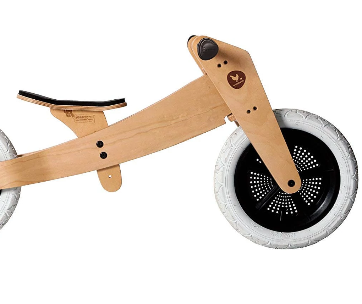
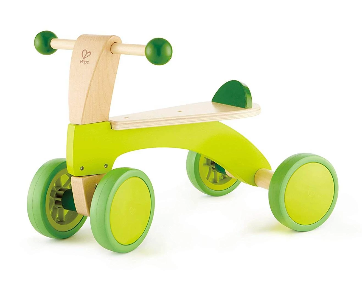
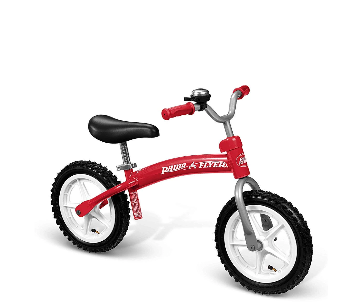
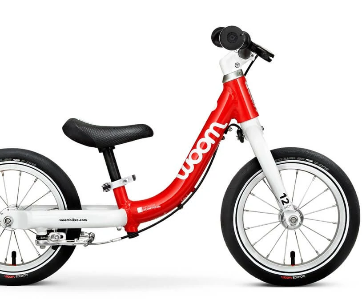
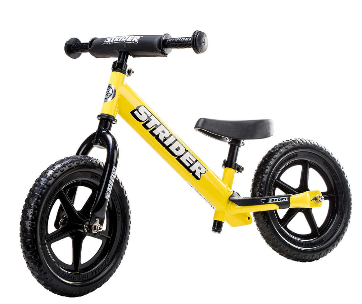
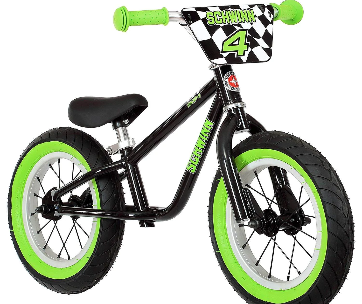
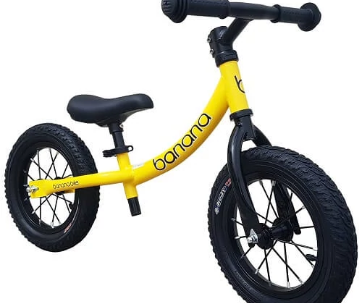
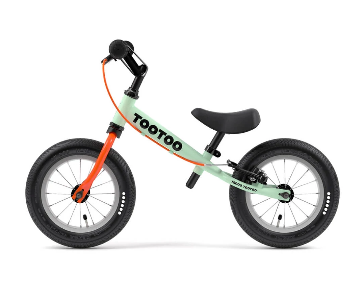
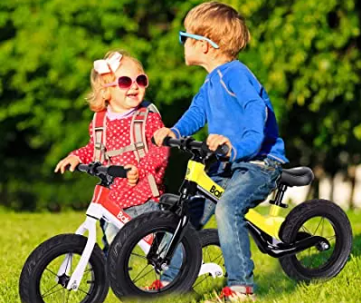
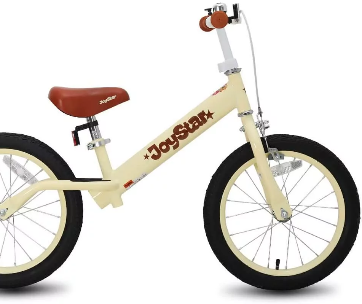
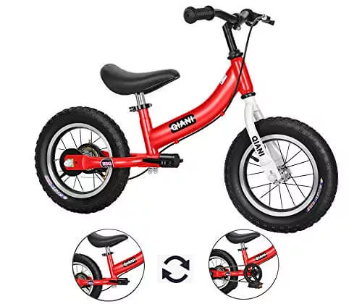
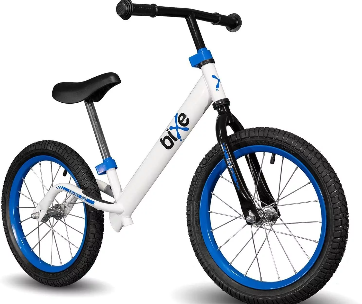
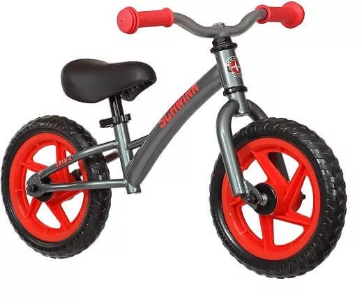
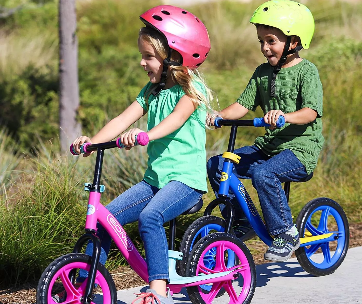
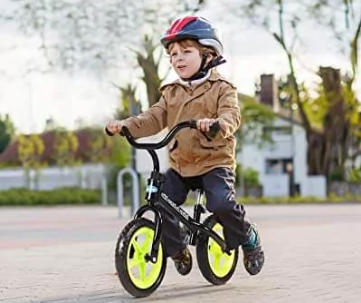
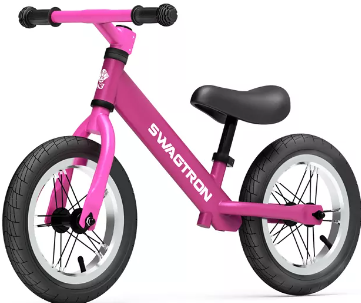
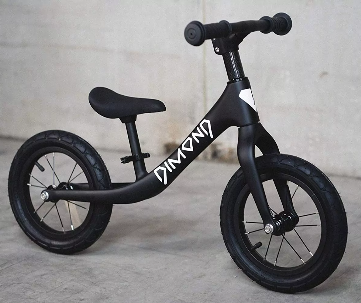
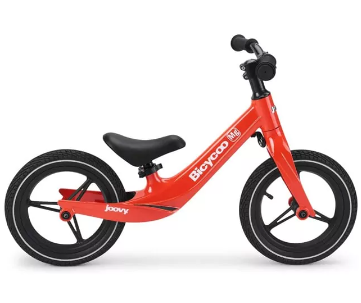
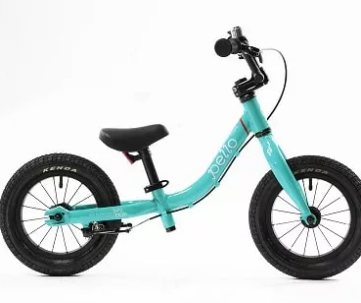
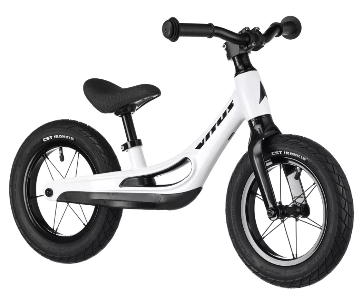
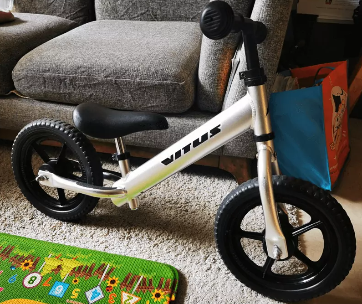

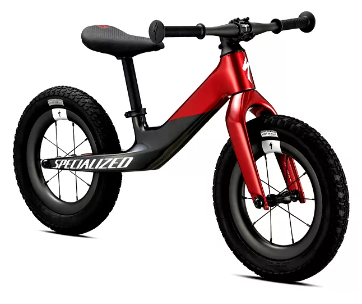
Comments
This is great. Thank you. Is there an actual curriculum for how to teach a student to ride a balance bike?
I bet there is an actual curriculum. Let us check around and recommend. Nevertheless, once you use these tips, get your kid (s) a balance bike, and use a few videos on Youtube, you are good to go.